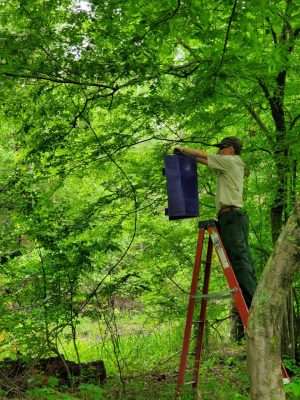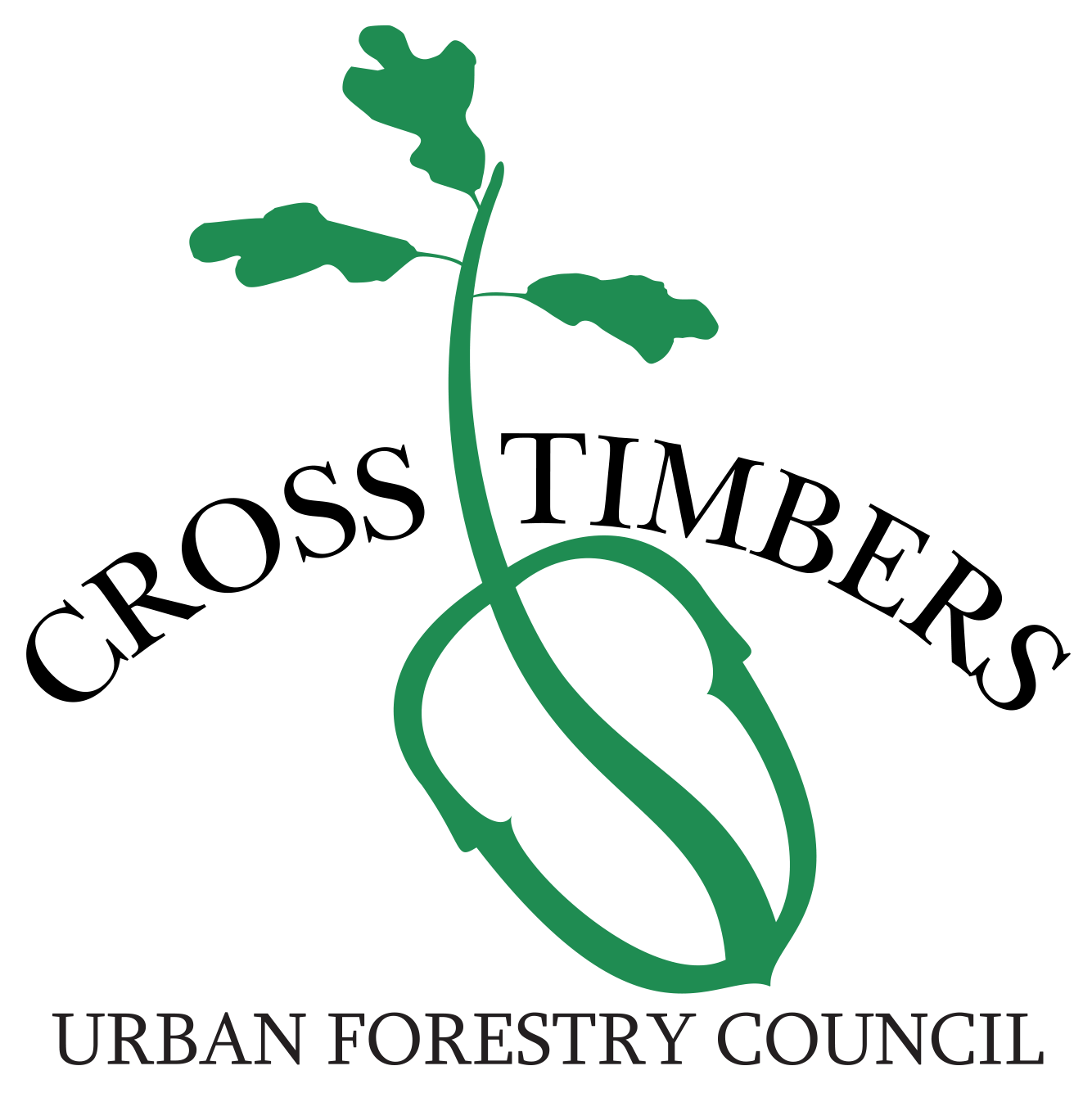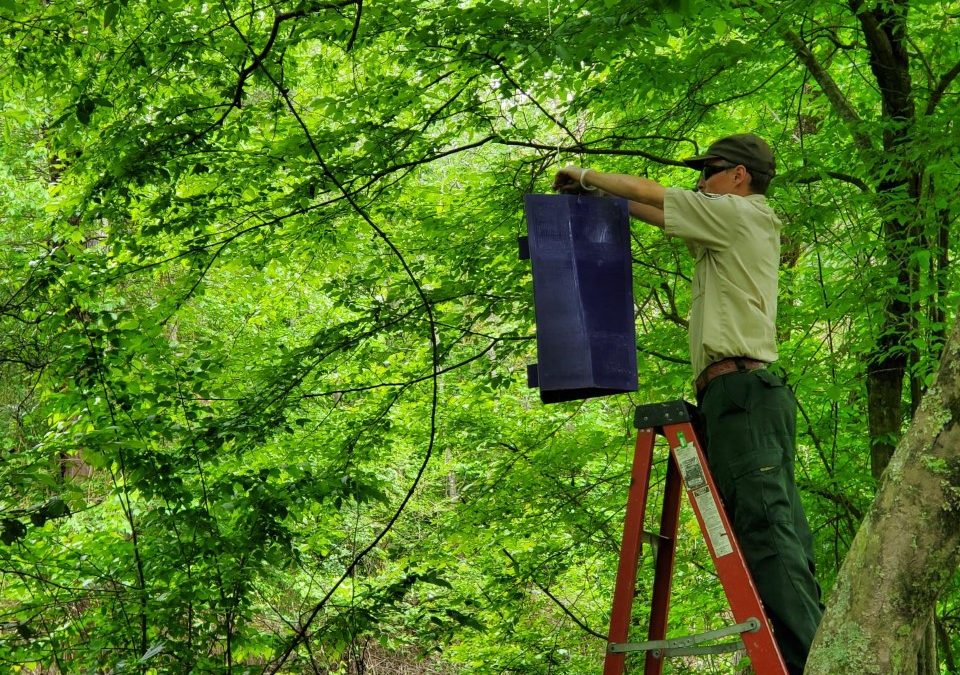By Allen Smith

It’s not a complicated device: just some purple plastic, coated with glue and baited with a clear pouch containing a lure– but this emerald ash borer (EAB) trap is a scientifically-designed instrument and serves as our first line of defense against EAB infestation. Since 2011, Texas A&M Forest Service entomologists have been placing these traps in ash trees across Texas looking for the emerald ash borer. The trap is known as a purple prism trap and is designed to catch adult EAB after they emerge in the spring. A specific shade of purple is used as it has been proven to be effective in attracting female buprestid beetles. The female EAB equate the purple color with the appearance of an ash tree trunk where they lay eggs. Male buprestids, including EAB, are more attracted to a green color which is something that these visual insects would except to see in a tree canopy.
Traps are held in the open position by a pot metal spreader to which raising/lowering lines are affixed as well as the EAB lure. Emerald ash borers, being visual creatures, do not use pheromones to locate mates as extensively as other insects such as bark beetles for example. EAB lures are clear pouches containing z-3 Hexenol, an alcohol compound used to mimic the volatile smells given off by ash foliage.
Traps are coated with a very sticky glue that persists the length of the 120-day trapping season. Swarming, aggregating, and mating EAB become entangled in the glue and cannot escape. Traps are hung in ash trees throughout the target county and checked after 60 days to see if any EAB have been caught. At this time, a new hexenol lure is attached and trapping resumes for another 60 days. After 120 total days of trapping, the traps are checked again for EAB and then removed from the locations. Traps in counties where EAB has been reported, are checked weekly. All caught EAB are removed and labelled with date of collection and trap name. Collected samples are then sexed to determine the emergence timing of males vs. females and the opening and closing of the adult flight period window.

Since the confirmation of the emerald ash borer, Agrilus plannipennis, in Tarrant County (2018) and Denton County (2020), interest in EAB management in the Metroplex has increased. The Texas A&M Forest Service has been on the lookout for this most destructive forest pest since 2011 when 300 EAB traps were deployed in areas of east Texas with notable ash populations. This year, approximately 500 EAB traps will deployed across Texas to provide a measure of early detection. Most of the traps will be scattered throughout east Texas with almost 40 traps covering the Conroe/Houston/Galveston area. Traps are already deployed for 2022 along the I-35 corridor from San Antonio to the Metroplex. Dallas, Denton, Tarrant and surrounding Metroplex counties will host approximately 100 EAB traps. Traps will be located in parks, cemeteries, natural areas, and on rural private lands that contain a sizable ash tree population.
If you have any questions about emerald ash borers, EAB trapping or EAB management, please contact your local Texas A&M Forest Service office.

